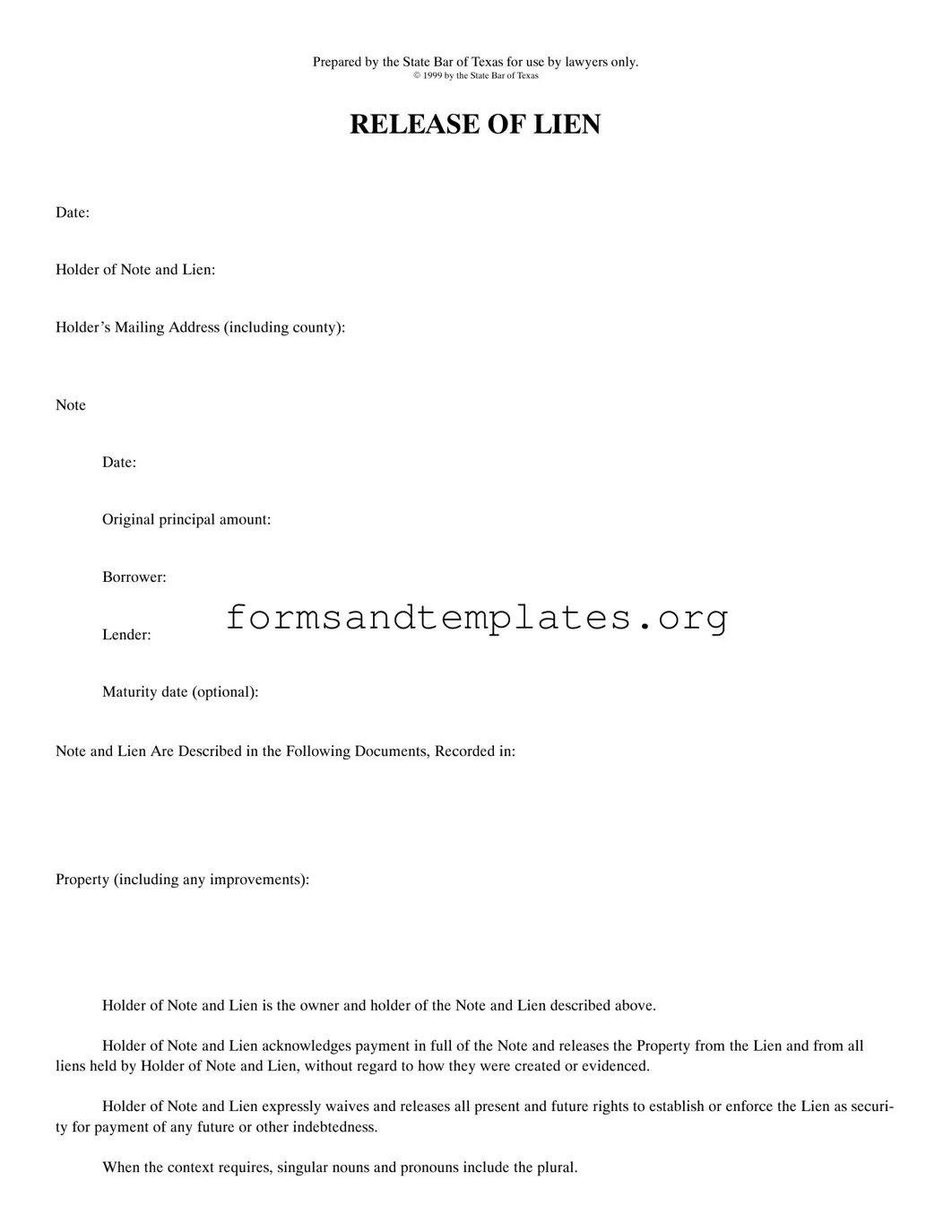Printable Release Of Lien Texas Template
The Release of Lien Texas form is a crucial legal document that signifies the release of a lien on a property once a debt has been fully paid. This form not only acknowledges the payment in full of the associated note but also ensures that the property is freed from any claims held by the lienholder. For those needing to complete this process, filling out the form is an essential step—click the button below to get started!
Access Editor Here
